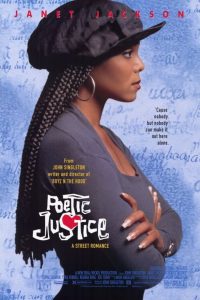During the start of Hollywood, African Americans were given roles that enforced racist stereotypes such as maids, butlers, slaves, and sharecroppers.
The film The Birth of a Nation is an example of racist representations of African Americans on film. The movie portrayed black men as sexual aggressors toward white women and glorified Ku Klux Klan members as heroes.
Even before African Americans were allowed to perform, White Americans created Minstrel shows where white performers would blacken their faces and portray themselves as African Americans. Minstrel Shows were very popular in the 19th century. The performances included hyperbolic depictions of African Americans as lazy, ignorant, and hypersexual.
The Homesteader was the first African American film produced in 1919 by Oscar Micheaux. The Film Homesteader tackled issues like race, segregation, and censorship. For the rest of his career, Micheaux produced films like Homesteader that challenged Jim Crow-era society. Throughout the centuries, African American filmmakers have molded their experiences of life, love, and pain into films. Black cinema has served as an avenue for creative expression and cultural affirmation.
Movies like Boyz n the Hood or The Hate U Give impact African Americans because the stories that are told resonate with their own experiences, making them feel understood. “The Color Purple (1985) has a powerful message, and it’s a classic,” said junior Elies Gay. “One of my favorite black movies is The Hate U Give — it highlights police brutality and how it’s structured around the black community,” said senior Chiamaka Okafor.
Boyz n the Hood – John Singleton (1991)

Boyz n the Hood directed by John Singleton is about young Black men growing up in South Central Los Angeles. Singletonis brought light to acknowledge systemic oppression, gang violence, poverty, and police brutality in the Black community. This film is iconic for its scenes, quotes, and soundtrack; it has been referenced in other films, TV shows, and songs—underrepresented communities. For example, the movie Straight outta compton (2015) footage was shown during the end credits. The film has a significant impact on popular culture. The film visualizes the experience of when a community is surrounded by violence, it creates a philosophy to kill or to be killed.
Poetic Justice – John Singleton (1993)

Poetic Justice directed by John Singleton is about a hairdresser named Justice who grieves the loss of her murdered boyfriend and uses poetry as a coping method. Throughout her grief, Justice’s friend Lesha convinces her to go on a road trip to Oakland, California with Lesha’s boyfriend Chicago, and Chicago’s co-worker, Lucky. Throughout the road trip, the film uses Poetry, by Maya Angelou, to express what Justice is feeling. Poetic Justice also highlights all the issues facing young African Americans in the 1990s, Justice expresses those concerns with poetry. Overall, the film displays a strong black woman who demands respect from men, helps uplift women, and inspires them to love themselves. As well as focusing on trauma and recovery.
The Hate U Give – George Tillman Jr. (2018)

The Hate You Give written by Angie Thomas in 2017, was adapted into a movie in 2018 directed by George Tillman Jr. The Hate You Give is a coming-of-age fiction that highlights microaggressions and police brutality. The movie follows Starr Carter as she code-switches between her 2 communities: her black neighborhood and predominantly white school. The Hate U Give demonstrates what many people of color have to go through and deal with in society, As well as how opinions of African Americans affect how they’re portrayed in the media. The film also talks about people who have to live with police violence and how their day becomes altered once facing the violence. Overall, it helps the viewers relate in a way to those who have experienced this issue.
They Cloned Tyrone – Juel Taylor (2023)

They Cloned Tyrone directed by Juel Taylor is about how a dope dealer Fontaine, accidentally discovers the truth about his home and community. The film is a Government conspiracy on the thought of whitewashing African Americans to make them appear white and skew the ideas of peace and equality while completely ignoring deep-rooted and systemic issues in the community. This change would “erase all differences and promote harmony” among people. Throughout the movie, they use black ideology and activities to explore the idea of how society tries to control African American thoughts and beliefs. The film shows how Taylor satirizes racial tropes that “all black people look alike and act the same” using the most stereotypical black things in the community (a pimp, an escort, and a drug dealer). They also use metaphors and nuances throughout the movie like fried chicken Kool-Aid and hair perms to trap black people in mind control.

















